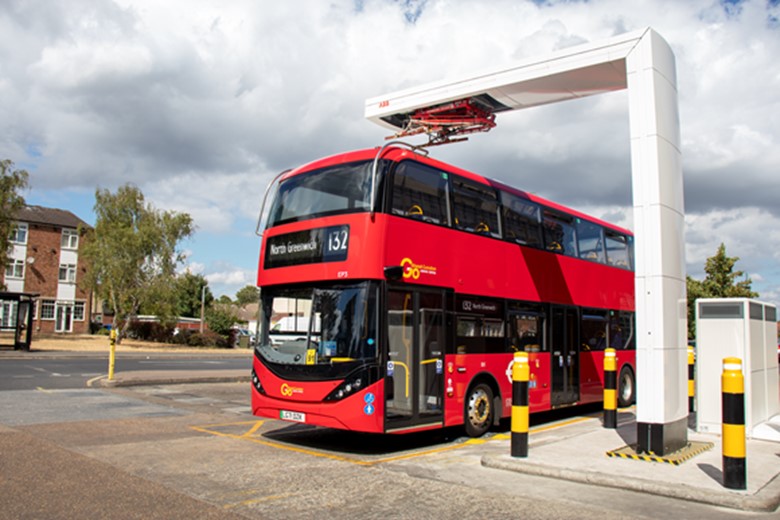London's public transport revolution: pantograph charging sparks a green future for bus fleets
23/11/2023
London's push toward a zero-emission future has reached a significant milestone with the introduction of innovative pantograph technology at Bexleyheath bus garage.

This technology facilitates rapid, wireless charging for buses on the all-electric route 132, showcasing London's commitment to a cleaner and greener public transportation system.
TfL's plan aims for a fully zero-emission bus fleet for all of its 9000 buses in London by 2034, supporting the Mayor's broader goal of achieving net zero by 2030. With more than 850 zero-emission buses already in operation, the focus now turns to enhancing charging infrastructure to meet the demands of diverse bus routes across the city.
The pantograph, resembling an arm-like structure, attaches to the bus's roof for quick, high-power charges throughout the day, a process known as 'opportunity charging.' This breakthrough technology ensures buses can cover longer distances with each top-up, reducing the number of buses needed and allowing resources to be redirected for network improvements.
The success of route 132 has paved the way for an extension of 'opportunity charging' on route 358, covering 15 miles between Crystal Palace and Orpington. With pantographs strategically located at each end of the route, buses receive quick boosts on the spot, minimizing turnaround time and optimising service efficiency.
Deputy Mayor for Transport, Seb Dance, said, “Londoners deserve to breathe clean air, and as part of our work to tackle the twin dangers of toxic air pollution and the climate emergency, I'm pleased that this new technology is being used on buses in south London. The introduction of the pantograph builds on the progress we have already made to run a cleaner and greener bus service.”
TfL's plan aims for a fully zero-emission bus fleet for all of its 9000 buses in London by 2034, supporting the Mayor's broader goal of achieving net zero by 2030. With more than 850 zero-emission buses already in operation, the focus now turns to enhancing charging infrastructure to meet the demands of diverse bus routes across the city.
The pantograph, resembling an arm-like structure, attaches to the bus's roof for quick, high-power charges throughout the day, a process known as 'opportunity charging.' This breakthrough technology ensures buses can cover longer distances with each top-up, reducing the number of buses needed and allowing resources to be redirected for network improvements.
The success of route 132 has paved the way for an extension of 'opportunity charging' on route 358, covering 15 miles between Crystal Palace and Orpington. With pantographs strategically located at each end of the route, buses receive quick boosts on the spot, minimizing turnaround time and optimising service efficiency.
Deputy Mayor for Transport, Seb Dance, said, “Londoners deserve to breathe clean air, and as part of our work to tackle the twin dangers of toxic air pollution and the climate emergency, I'm pleased that this new technology is being used on buses in south London. The introduction of the pantograph builds on the progress we have already made to run a cleaner and greener bus service.”